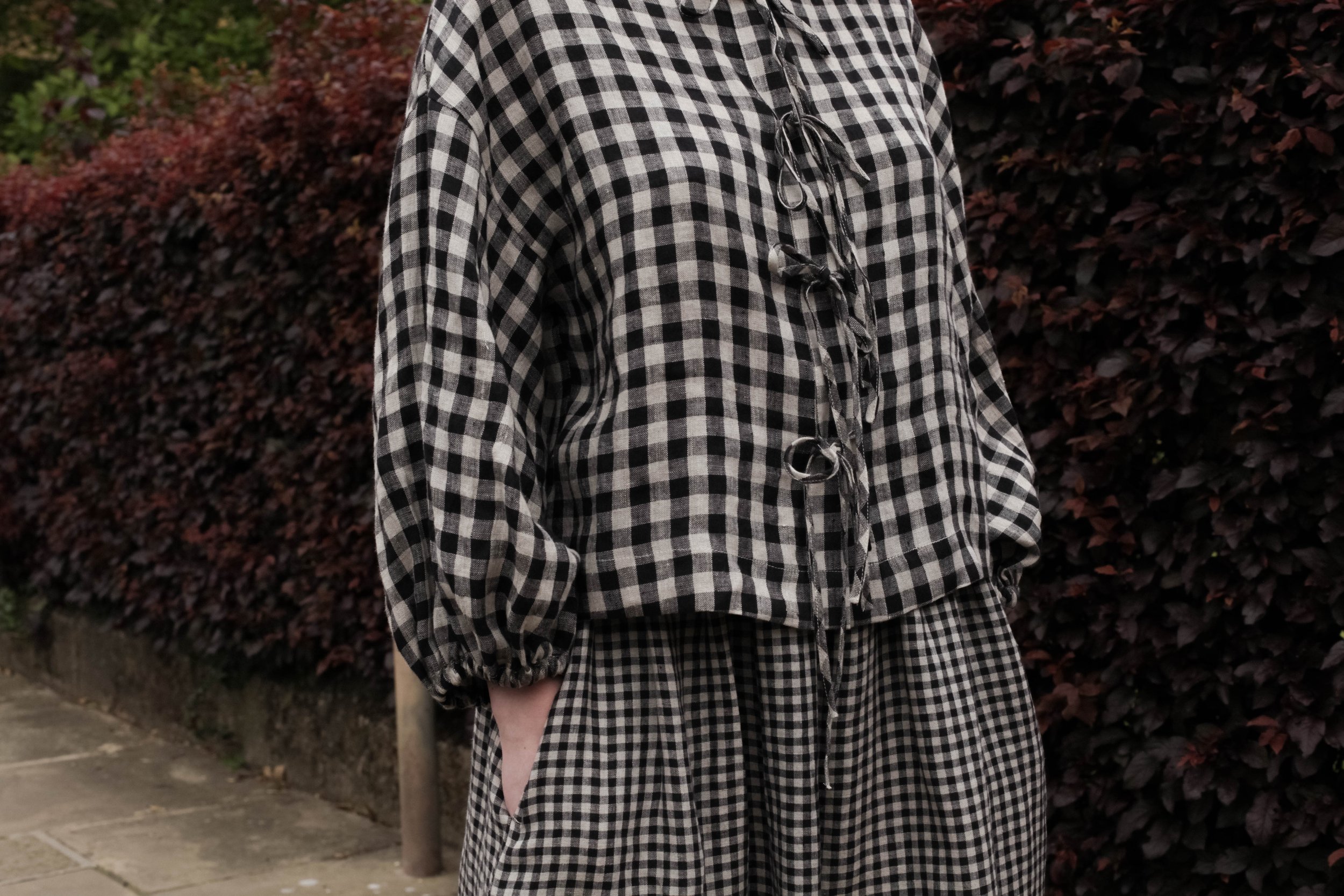Linen care guide
Linen care guide
Caring for your linen properly can help extend its lifespan by many years, giving you much more wear in the garments you love.
Before we begin, let’s remind ourselves why we love it. According to the European Confederation of Linen and Hemp, ‘a linen shirt uses 6.4 litres of water’ throughout its creation and lifecycle, in comparison to 2,700 litres for a single cotton t-shirt. We work specifically with small-batch, zero-waste Lithuanian producers who operate mills run on green energy, as it’s a perfect climate to propagate linen with minimal added water.
It’s breathable and thermo-regulating, naturally moth and odour resistant, can withstand boiling temperatures, and absorbs moisture without holding on to bacteria, meaning it’s both anti-bacterial and anti-fungal. All of these factors - abundant as they are - make it invaluable to a mindful wardrobe.
Gifted with such a sustainable and hardwearing fabric, we must do the best we can to ensure our linen garments wear just as slowly and kindly as they’re made.
Let’s set out a few ground rules to keep things simple.
Beware of over-washing and hot washes
Avoid folding or pegging - hang on hanger to dry or lay flat
Iron on the reverse, if at all
Washing
People commonly tend to over-wash garments, especially when they absorb odour quickly. However, linen’s a really low-maintenance textile that prefers not to be washed too often. Airing your linens while hanging near an open window or on the washing line can be a simple way to freshen them up without washing. It’s always best to carefully consider the reality of your garment and whether it truly needs a clean just yet, particularly when it comes to loose, non-restrictive styles that don’t tend to stay close to the skin - like the ones we create here at Nadinoo.
There’s no need for too much heat when washing your linen. If you’re machine-washing, use a gentle setting; a 30 degree cycle will do just fine. Avoiding high temperatures not only keeps the cloth from shrinking, but reduces your carbon footprint.
Fabric softener isn’t necessary, as linen fibres soften independently with each wash to become more pliable which in turn improves drape and comfort.
Drying
Linen sustains less damage than other fabrics whilst being machine-washed - you’ll see this in the lack of fluff and fibres that are often produced in abundance post-wash by other types of cloth. It’s also pretty quick to dry, so if you’re air-drying, simply hang your garment on a wooden hanger (inside out if putting outside on the line to avoid any sun bleaching) or lay the garment flat over your drying rack. It’s always best to avoid the stress of clothespins, so the garment can retain its shape whilst it dries. Linen may be even stronger when wet (hence its toughness when being washed), but it’ll help you reduce any creasing or pulling.
Always try to air-dry your garments - but if you have to tumble-dry, keep to a very low heat to avoid shrinkage.
Ironing
If you’ve hung your garment on a hanger to dry or laid it flat when drying without the help of clothespins, you shouldn’t face too much hassle when it comes to wearing it straight off the rack. One of the joys of linen is how well it can evoke that relaxed, carefree quality, and you may find that you embrace the wabi-sabi calm of lived-in, softly-crumpled linen.
However, if you do prefer a sharper look, you’ll need a no-higher-than-medium heat with lots of steam for pressing, making sure to iron on the reverse side of the fabric to avoid shine or fade.
As we’ve established, linen’s an incredibly diverse, eco-friendly fabric, and it’s our duty as makers and wearers of slow fashion to continue this thread of sustainability.
Perhaps you’d like to think of it this way: that caring for our clothes isn’t a task, but a ritual.
It’s a ritual that grounds us, connecting us with the tactile nature of what we choose to adorn our bodies with. It’s a chance to set aside our distractions and thank our garments with care, as we might with any other cherished object that works and wears for us.

